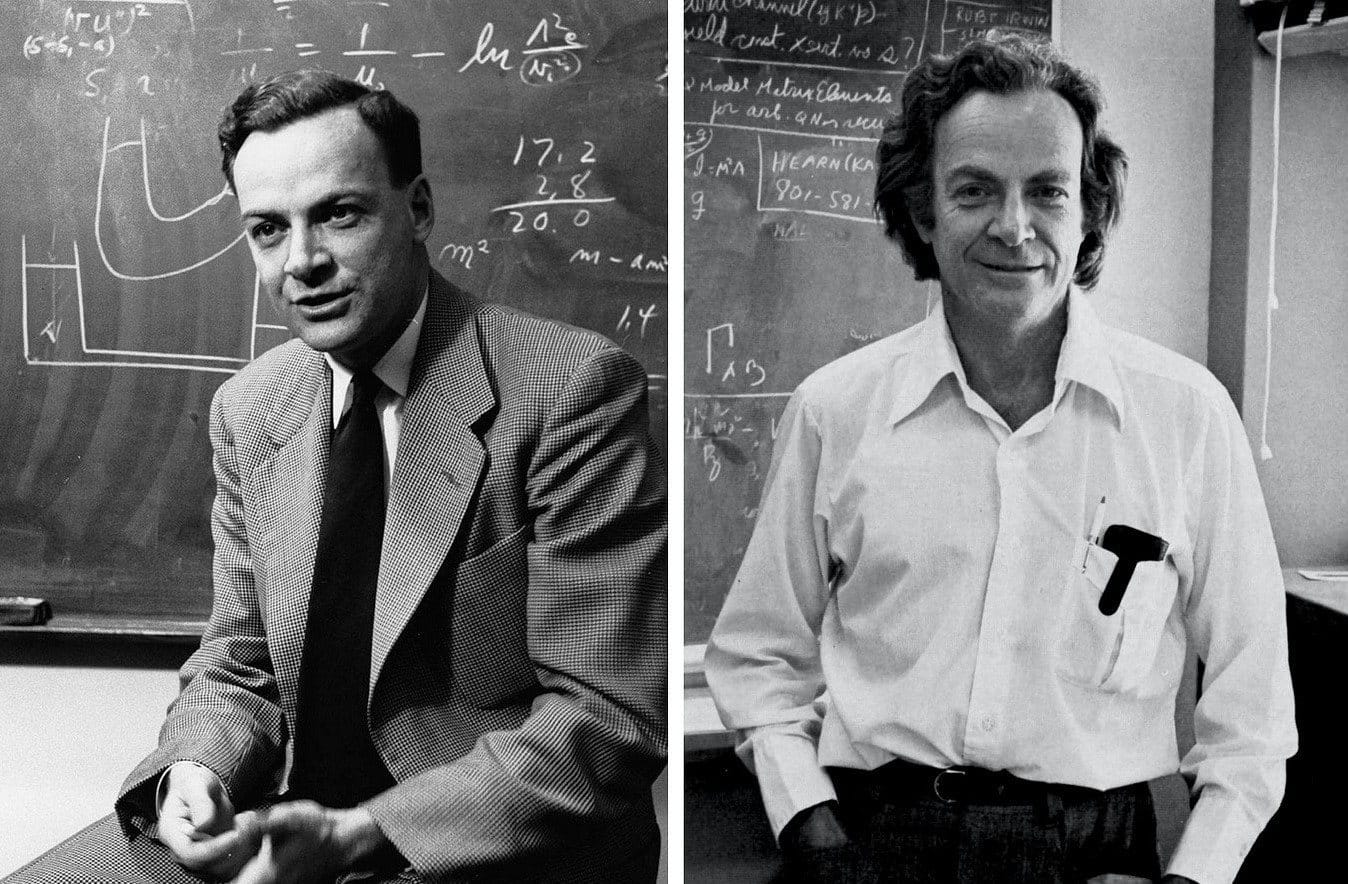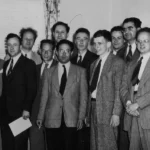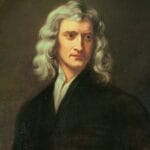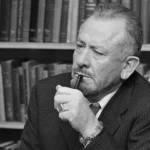Get ready to meet Richard Phillips Feynman, a genius physicist who was anything but ordinary. Feynman was a master of demystifying complex scientific concepts, making them accessible and captivating for everyone. From his unorthodox ideas to his incredible storytelling abilities, Feynman’s influence on the world of science is undeniable. Join us as we dive into the intriguing life and legacy of this scientific icon, unveiling hidden facts that will make you appreciate his brilliance even more.
Intriguing Facts About Richard Phillips Feynman
Richard Feynman wasn’t your typical genius. Sure, he was brilliant—even Einstein thought so—but he also had a playful side that made him incredibly interesting. Let’s dive into some lesser-known facts about this remarkable fellow.
1. A Mind That Cracked Codes, Literally!
You know what’s cooler than a Nobel Prize in Physics? Using your physics know-how to crack safes… for fun! Feynman had a knack for figuring out how things worked, and that included the supposedly uncrackable safes at Los Alamos during the Manhattan Project. Word is, he could empty a safe quicker than you could finish your lunch!
2. The “Great Explainer”
Have you ever struggled to understand complicated stuff? Feynman felt you. He believed that if you couldn’t explain something simply, you didn’t truly understand it. That’s why his lectures were legendary. He used everyday examples and humor to break down complex ideas, making physics accessible to everyone, not just the brainiacs.
3. Beyond the Textbook: Bongos and Nature Walks
When he wasn’t busy deciphering the universe, Feynman had some pretty cool hobbies. Imagine a world-renowned physicist jamming on the bongos! Yep, that was Feynman! He also loved exploring nature, finding inspiration in the patterns of a leaf or the climb of a mountain.
4. The Challenger Disaster: A Voice for Truth
Feynman wasn’t afraid to challenge authority, especially when lives were at stake. After the tragic Space Shuttle Challenger explosion, he was appointed to the investigative commission. His simple, yet powerful, demonstration with a rubber O-ring exposed the technical flaws that led to the disaster.
5. Feynman Diagrams: A Picture Speaks a Thousand Equations
Ever wonder how scientists visualize the interactions of tiny particles? Feynman did, and he came up with a revolutionary solution: Feynman diagrams. These elegant diagrams, looking like doodles at first glance, are now essential tools in quantum physics, helping us understand everything from light to the building blocks of matter.
6. A Legacy of Curiosity and Laughter
Feynman’s life was a testament to the power of curiosity, a playful spirit, and a dedication to understanding the world around us. His legacy lives on, not just in his groundbreaking scientific contributions, but also in his engaging books and lectures that continue to inspire generations of thinkers and dreamers.
7. Cracked Safes at Los Alamos
Feynman used his physics knowledge to unlock safes for amusement.
8. Hobbies Included Bongos and Nature Walks
Feynman enjoyed playing music and finding inspiration in the patterns of nature.
What are Some Interesting Facts About Richard Feynman?
So we’ve talked about Richard Feynman’s big brain stuff—like how he reshaped our understanding of tiny particles and won a Nobel Prize for it. But did you know this guy was a whole lot more than just a physics whiz?
Turns out Feynman was what you might call a “Renaissance Man”—a total expert in a bunch of different things. Aside from cracking the code of quantum electrodynamics (QED – sounds intense, right?), he also dabbled in music, painting, and even figured out how to crack safes! Talk about a guy with too much brainpower!
And get this—Feynman wasn’t just brilliant; he was a seriously cool teacher too. He taught at Caltech, and students absolutely loved his lectures. He could take the most complicated ideas and make them crystal clear. Plus, he was all about searching for the truth, which led him to help figure out what caused the tragic Challenger Space Shuttle disaster.
Ever heard of quantum computing? It’s a mind-bending field, and you guessed it—Feynman had a hand in that too. He helped lay the groundwork for it, along with some seriously complex stuff called “path integral formulation” in quantum mechanics.
But here’s the thing about Feynman that might surprise you—he didn’t take himself too seriously. He was all about having fun with science and life itself. He truly believed that understanding the world around us, in all its weird and wonderful complexity, was the biggest adventure of all. And you know what? He might have been onto something.
Was Richard Feynman Gifted?
So, we’ve talked about Richard Feynman’s accomplishments—the Nobel Prize, his groundbreaking work in physics, and his knack for explaining complex ideas in a way that just makes sense. But what about the man himself? Was he just born brilliant, some kind of physics prodigy?
Well, there’s no doubt that Feynman showed signs of brilliance from a young age. He was a curious kid, always tinkering and trying to figure out how things worked. He taught himself advanced math and had a knack for understanding complex concepts. But it wasn’t just raw brainpower. Feynman had an almost relentless drive to understand the world around him. He wasn’t afraid to ask “why?” and then keep asking until he got to the bottom of things.
Think about his “Feynman diagrams,” for example. These visual representations of particle interactions revolutionized the way we understand quantum field theory. They weren’t just some stroke of genius that came out of nowhere. They were the result of Feynman’s relentless pursuit of understanding, his willingness to visualize and simplify complex ideas.
And then there’s the story of his involvement in the Challenger disaster investigation. Remember the famous O-ring demonstration? Feynman didn’t just read a report and call it a day. He dug deeper, performed his own simple yet elegant experiment, and exposed the critical flaw that led to the tragedy. That’s classic Feynman—always curious, always questioning, and always looking for the truth.
But let’s not forget, Feynman was more than just a brilliant physicist. He was a complex and fascinating individual. He was a talented musician, a skilled artist, and a captivating storyteller. He even wrote popular science books that are still enjoyed by readers today.
So was Richard Feynman gifted? Most likely. He certainly possessed an extraordinary intellect. But it was his unwavering curiosity, his passion for knowledge, and his unique way of looking at the world that truly set him apart. He reminds us that brilliance isn’t just about being smart; it’s about being bold enough to ask questions, to challenge assumptions, and to never stop exploring the wonders of the universe.
How Did Richard Feynman Impact the World?
Picking up where we left off, let’s dive into how Richard Feynman’s genius spilled over from the world of complex equations and particles into shaping how we understand and interact with the universe.
You see, Feynman wasn’t content with just understanding the quantum world—he wanted to explain it, to make it make sense, even if the rules often felt like they were written in disappearing ink! His work on quantum mechanics, especially his ideas about how particles move through something called “path integrals” and how light and matter get along in the wacky world of “quantum electrodynamics,” well, it earned him a Nobel Prize in Physics. Think about that for a second—this was groundbreaking stuff that changed how we view the very fabric of reality.
And if that wasn’t enough, Feynman was also a key player in the Manhattan Project. Yes, that Manhattan Project—the one that led to the development of the atomic bomb during World War II. His work on this project, while controversial, undeniably shaped the course of history, highlighting the profound implications of scientific discovery.
But Feynman wasn’t just a brilliant scientist tucked away in a lab—he was a captivating teacher too. He had this knack for taking mind-boggling physics concepts and breaking them down into something understandable, something almost anyone could grasp. His lectures at Caltech were legendary, and his book, “The Feynman Lectures on Physics,” is still considered a must-read for anyone wanting to dip their toes into the world of physics. He had a way of making you feel like you were right there with him, unraveling the mysteries of the universe, one equation at a time.
What’s even more amazing is that Feynman’s curiosity knew no bounds. He wasn’t just interested in the tiny realm of quantum particles; he was thinking big, way ahead of his time. He was among the first to really dive into nanotechnology—the idea of building things atom by atom—and his work laid the groundwork for what might become the future of computing: quantum computers.
But perhaps what truly set Feynman apart was his constant questioning, his refusal to accept things at face value. He was famous for his “Cargo Cult Science” speech where he called out flimsy research practices and urged fellow scientists to hold themselves to a higher standard of honesty and rigor. Feynman taught us that science is not about blindly accepting dogma, but about constantly questioning, testing, and refining our understanding of the world.
Now, it’s important to note that our understanding of Feynman’s work, especially in rapidly evolving fields like quantum mechanics and nanotechnology, continues to grow. New discoveries and interpretations might add nuance to his legacy. But one thing is for sure: Richard Feynman’s impact on science, technology, and our overall understanding of the universe is undeniable and enduring. He showed us that science is not just about cold, hard facts; it’s about curiosity, creativity, and a relentless pursuit of truth, no matter how strange or counterintuitive it may seem.
How Many Languages Did Richard Feynman Speak?
We already know Feynman was a total genius in physics, making groundbreaking contributions to quantum mechanics. He was like the cool teacher everyone wished they had, explaining super complicated science stuff in a way that even regular folks could understand. But here’s a question that might have you wondering: how many languages did this guy actually speak?
Well, it turns out Feynman was something of a linguistic rockstar. While pinning down an exact number is tricky, he is believed to have been fluent in at least 10 languages. We’re talking English, Spanish, Portuguese, French, German, Russian, Italian, Japanese, and even Swahili! That’s some serious multilingual talent right there.
Now, imagine being able to chat with scientists from all corners of the globe, bouncing ideas off each other in their native tongues—Feynman could do that! His language abilities were like superpowers, helping him work with brilliant minds and share his insights far and wide.
But it wasn’t just about science. Feynman was fascinated by how language itself shapes the way we think and experience the world. He believed that picking up new languages was like opening secret doors in your mind, expanding your horizons and giving you a whole new perspective on things.
And just to add to his already impressive resume, Feynman was a man of many talents. When he wasn’t busy unraveling the mysteries of the universe, he could be found playing music, dabbling in art, and generally being an all-around interesting dude. His ability to connect with people from all walks of life, coupled with his insatiable curiosity, made him a truly exceptional individual.
What is Feynman’s IQ?
So, we’ve talked about Feynman’s incredible mind, but what about that IQ score everyone’s curious about? Here’s the thing: the number usually thrown around is 125. Now, that’s definitely above average, but it might not scream “groundbreaking genius” on the surface, especially considering the incredible heights Feynman reached in his field. This has led to a lot of head-scratching and debate over the years.
Some folks think the 125 score doesn’t tell the whole story. After all, Feynman wasn’t just book smart; he had this uncanny ability to break down complex problems, see things from totally unique angles, and explain mind-boggling physics concepts in a way that even I could almost understand (almost!). This suggests that his cognitive strengths might not have been accurately captured by a standard IQ test.
There’s even been speculation that Feynman’s verbal abilities might not have been as strong as his mathematical genius. It’s like he had this mental superpower when it came to numbers and equations, but words weren’t necessarily his jam. This kind of uneven cognitive profile isn’t uncommon, and it shows how a single IQ score can be a pretty limited snapshot of someone’s true intellectual capacity.
This whole Feynman IQ puzzle really highlights something important: intelligence is a tricky thing to pin down. It’s way more than just a number on a test. It’s about creativity, problem-solving, and the ability to think differently. Feynman had all of that in spades, and that’s ultimately what made him such a revolutionary figure, regardless of what a single test might have said.
Think about it: If we only judged Albert Einstein or Marie Curie on their test scores, would we fully grasp their genius? Probably not. The same goes for Feynman. His legacy continues to inspire scientists and thinkers today, proving that true brilliance can’t be confined to a single number.
What is Feynman Most Known For?
So, we’ve talked about Richard Feynman, this brilliant physicist who turned the science world upside down. But what exactly made him so famous? Let’s dive into the specifics of what this guy did to earn his place in history.
1. Quantum Mechanics Rockstar
Imagine trying to understand the tiniest particles in the universe, like electrons. That’s what quantum mechanics tries to do, and Feynman’s work in quantum electrodynamics completely revolutionized this field.
It’s like he took a blurry picture and brought it into sharp focus. This breakthrough was a big deal, earning him the Nobel Prize in Physics in 1965.
2. Feynman Diagrams: A Picture Speaks a Thousand Equations
Ever wish complex physics concepts came with illustrations? Well, Feynman had a knack for making the invisible visible. He invented these nifty diagrams, kind of like stick-figure drawings for physicists, which showed how particles interact. These diagrams are still used today because they make super complicated ideas much easier to grasp.
3. The Challenger Disaster: A Scientist Detective
When the Space Shuttle Challenger tragically exploded in 1986, Feynman was called upon to help figure out why. With his signature sharp wit and relentless pursuit of truth, he famously demonstrated the cause of the disaster during a televised hearing. He used a simple glass of ice water and a rubber O-ring, proving that the O-rings, which were supposed to seal the rocket booster joints, failed in cold temperatures. This showed that Feynman’s genius wasn’t confined to theoretical physics; he could apply his scientific mind to real-world problems with incredible impact.
4. Making Science Fun for Everyone
Feynman wasn’t just a brilliant scientist; he was an incredible teacher who could explain incredibly complex things in ways anyone could understand. His lectures were legendary, filled with humor and a contagious enthusiasm for science. He wrote books like “Surely You’re Joking, Mr. Feynman!” that were not your typical boring textbooks. They were funny, engaging, and made physics seem cool, inspiring countless people to learn more about the world around them.
5. The Future of Tech: Nanotechnology and Quantum Computing
Feynman wasn’t afraid to think big and challenge the boundaries of what was possible. He had this amazing ability to see into the future of science. In the 1950s, he gave a lecture called “There’s Plenty of Room at the Bottom,” where he basically predicted the whole field of nanotechnology—manipulating things at the atomic level. He also had a huge influence on quantum computing, an area of computing that harnesses the power of quantum mechanics to solve problems that are too complex for even the most powerful computers we have today.
6. A Curious Mind Never Stops
Feynman wasn’t just a one-trick pony. Sure, he was a physics genius, but he was also fascinated by everything around him. He played the bongos, cracked safes, even dabbled in art. This insatiable curiosity was at the heart of everything he did. He approached the world with a childlike wonder and taught us that it’s okay to be passionate about many things, to never stop asking questions, and to always be eager to learn something new.
The Takeaway:
Richard Feynman was more than just a physicist; he was a force of nature. He tackled some of the most challenging questions in science, made groundbreaking discoveries, and then turned around and explained it all in a way that made you want to learn more. He was a true original, and his legacy continues to inspire scientists, thinkers, and curious minds of all ages.
Did Feynman Know Einstein?
So, you’ve heard about Feynman and his legendary encounter with Einstein, right? Well, picture this: a young and eager Feynman, fresh out of the academic oven, bumps into the one and only Albert Einstein. Talk about a meeting of minds! It was a brief but significant moment that left a lasting impression on Feynman.
Now, you might be thinking—they were both brilliant physicists, but weren’t their personalities totally different? You’re absolutely right! Einstein, the quiet, contemplative genius, and Feynman, the energetic, always-cracking-a-joke kind of guy. It’s like mixing oil and water, right? But here’s the thing: beneath the surface, they shared a deep respect for each other’s work. They recognized the spark of genius in each other, and that’s what really mattered.
Imagine Feynman’s first seminar—a nerve-wracking experience for any young scientist. And guess who decides to show up? Einstein himself! Can you imagine the pressure? But that’s Einstein for you—always supportive of young minds. This encounter further solidified the respect and admiration between the two physicists.
What’s really interesting is how Feynman’s knack for explaining complex ideas in a simple, engaging way resonated with Einstein’s own way of thinking. See, Einstein wasn’t just about mind-boggling equations. He strongly believed in making science accessible, a principle that Feynman, often called “The Great Explainer,” truly embodied.
While their interactions might not have been documented in detail, it’s clear that Feynman and Einstein’s paths crossed on several occasions, leaving a mark on both their legacies. They may have had different personalities and approaches, but their shared passion for unraveling the mysteries of the universe united them.
Key Takeaways:
- Feynman’s first meeting with Einstein was a memorable event that left a lasting impression on the young physicist.
- Despite their contrasting personalities – Einstein’s quiet demeanor and Feynman’s exuberance – they deeply respected each other’s work.
- Einstein attending Feynman’s first seminar demonstrates a shared interest in fostering scientific dialogue and encouraging young talent.
- Both physicists believed in making science accessible, evident in Einstein’s clear thinking and Feynman’s talent for simplification, which earned him the nickname “The Great Explainer.”
Was Richard Feynman Curious?
You bet he was! Richard Feynman wasn’t just a brilliant physicist; he was a guy who couldn’t help but poke his nose into everything. This wasn’t some dry, academic curiosity either. Feynman’s need to figure things out—from the tiniest particles to cracking safes—was like a fire in his belly. It was just part of who he was.
Think about it: Feynman could have just coasted on his incredible physics brain, but nope, he dove headfirst into art, devoured history books, even taught himself how to play music. The guy was like a kid in a candy store, except the “candy” was knowledge, and the “store” was, well, the whole universe!
And this wasn’t just about him hoarding interesting facts. Feynman’s curiosity led him to challenge what everyone thought they knew about physics. He wasn’t afraid to ask the “stupid” questions, the ones that made everyone else go, “Huh, never thought of it like that.” And guess what? Those questions often led to groundbreaking discoveries.
Here’s the thing about Feynman: his enthusiasm was contagious. He didn’t just understand complex ideas, he made you want to understand them too. He made science cool, approachable, even a little bit mischievous. And that’s a legacy that continues to inspire scientists and “regular” folks alike.
Did Stephen Hawking Meet Richard Feynman?
So, you’re curious about whether two of the biggest names in physics, Stephen Hawking and Richard Feynman, ever crossed paths? You bet they did! They were both brilliant minds who made huge contributions to our understanding of the universe, but they didn’t exactly hang out all the time.
Bumping into Each Other at Caltech
Imagine this: a young Stephen Hawking, already making waves with his groundbreaking research, visits the hallowed halls of Caltech, where the legendary Richard Feynman is a professor. They probably said hello, maybe chatted for a bit at some academic gatherings. But from what we know, they didn’t exactly spend hours debating the mysteries of the cosmos over cups of coffee.
Different Strokes for Different Folks
Here’s the thing: Feynman was a bit of a free spirit in the world of physics. He was super into particle physics and quantum electrodynamics—basically, the really, really small stuff. Hawking, on the other hand, was captivated by the really, really big stuff—black holes and the universe’s grand design. It’s like they were both exploring different continents on the map of physics.
Feynman’s Blackboard Mystery
Now, here’s where it gets interesting. Before he passed away, Feynman kept a blackboard in his office covered in scribbles and ideas. One of the things he jotted down was “Accel. Temp.”—short for Acceleration Temperature. This has led some folks to wonder if Feynman was starting to peek into the world of the Unruh Effect, a concept closely related to Hawking’s famous discovery: Hawking Radiation. It’s a bit of a head-scratcher because, from what we can tell, Feynman never fully grasped the Unruh Effect during his lifetime.
The Birth of Hawking Radiation
So, if Feynman wasn’t the one who sparked Hawking’s imagination about Hawking Radiation, who was? Enter Yakov Zel’dovich, a brilliant Soviet physicist. Hawking was visiting the USSR when Zel’dovich introduced him to the idea of stimulated emission happening around rotating black holes. That sparked a light bulb in Hawking’s mind! He made a connection between this idea and the concept of spontaneous emission, and boom—Hawking Radiation was born!
The Great Unknown
Here’s the bottom line: we know Hawking and Feynman met, but their interactions remain a bit of a mystery. It’s entirely possible they had deeper conversations that just weren’t recorded or remembered. There’s a lot we still don’t know about how these brilliant minds may have influenced each other, even indirectly. What we do know is that both made incredible contributions to physics, each in their own unique way. And that’s pretty darn cool!
What Was Richard Feynman Interested In?
So, we’ve talked about some of Feynman’s achievements, but what really got him going? What were his passions? Well, buckle up, because Feynman wasn’t your average physicist; he was interested in practically everything!
Physics and Beyond
As you might expect, theoretical physics was his main jam. He wasn’t just interested in quantum mechanics—he pretty much revolutionized our understanding of it. We’re talking about groundbreaking stuff like the path integral formulation and his work on quantum electrodynamics, which basically explains how light and matter interact. And don’t even get me started on Feynman diagrams! He came up with this brilliant way to visualize the interactions of subatomic particles, and trust me, it’s way more exciting than it sounds.
But Feynman’s curiosity didn’t stop there. He was also fascinated by the weird world of superfluidity, especially in supercooled liquid helium. Imagine a liquid that can flow without any resistance—pretty mind-blowing, right? He also dove headfirst into particle physics, always trying to figure out what makes matter tick at its most fundamental level. And, like many brilliant minds of his time, he contributed to the Manhattan Project during World War II, helping to develop the atomic bomb.
Now, if you think that’s a lot, you clearly haven’t met Feynman. This guy was also way ahead of his time, dabbling in nanotechnology and quantum computing long before they became the buzzwords they are today.
Sharing His Passion with the World
But Feynman wasn’t just content with holing up in a lab somewhere. He had this infectious enthusiasm for science and a knack for explaining complex stuff in a way that even regular folks could understand. That’s probably why his lectures were legendary, and his books, like “Surely You’re Joking, Mr. Feynman!” and “The Feynman Lectures on Physics,” are still considered classics today.
Shaped by Life
Of course, nobody operates in a vacuum (unless you’re doing physics experiments, I guess!). Feynman was shaped by his experiences, like growing up Jewish in a time when antisemitism was rampant. And let’s not forget his dad, who always encouraged him to question everything and find joy in discovering how things worked.
Feynman truly believed that teaching was the best way to learn, and he lived by that motto. His unique blend of genius-level intellect, childlike curiosity, and down-to-earth humor continues to inspire countless people to this day. He showed us that science doesn’t have to be stuffy and intimidating—it can be an exciting, mind-bending adventure.
Speaking of inspiring figures, MMA fighter Evan Tanner, who sadly passed away in 2008, also left behind a legacy worth exploring. Check out these interesting facts about Evan Tanner. And while you’re at it, don’t miss out on the wild ride that is Roy Nelson and his “Crazy Train” walkout song. Learn more about the man behind the music in these facts about Roy Nelson.
- Unlock Water’s Symbolism: A Cross-Cultural Exploration - April 20, 2025
- Identify Black and White Snakes: Venomous or Harmless? - April 20, 2025
- Unlocking Potential: Origins High School’s NYC Story - April 20, 2025















